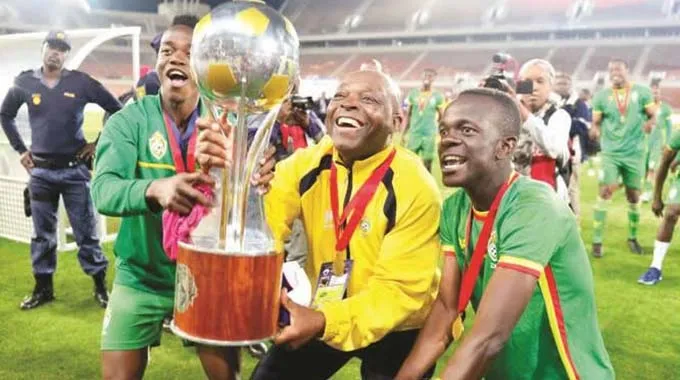From COSAFA Glory to Struggles: What Happened to the Warriors’ Local Core?
Zimbabwe’s national football team is facing renewed scrutiny over its reliance on foreign based players, but recent COSAFA and CHAN results have exposed a worrying decline in domestic talent competitiveness both in regional and international matches.
While the local Zimbabwe Premier Soccer League (PSL) continues to produce promising talent, recent history shows that Warriors teams built mainly from home-based players have struggled to replicate the success achieved by squads anchored by overseas- and South Africa-based professionals.
From COSAFA Glory to Gradual Decline
The contrast is unmistakable. Zimbabwe’s COSAFA Cup triumphs — from the early 2000s to the most recent title in 2018 — were powered largely by foreign-based players.
In 2000, players such as William Mugeyi and Benjamin Mwaruwari inspired a dominant 6–0 aggregate victory over Lesotho in the final. Three years later, in 2003, the likes of Peter Ndlovu, Charles Yohane, and Zvenyika Makonese, the latter two playing in South Africa’s PSL at the time, led Zimbabwe to another title.
The trend continued in 2018 when the Warriors lifted their sixth COSAFA Cup, with Khama Billiat and Tino Kadewere, both based abroad, producing decisive performances in the 4–2 final victory over Zambia.
Since then, however, the national team’s composition for COSAFA matches has shifted, relying increasingly on domestic-based players — particularly during the COVID-19 period, when travel restrictions kept many Europe-based stars from joining the squad. The impact on results has been evident.
Poor Results Mirror Domestic Shortcomings
During the same period, Zimbabwe failed to register a home win against Ethiopia, Zambia and Botswana, almost missing qualification for the Africa Cup of Nations. These were matches the Warriors were expected to win comfortably.
The decline has been evident in the team’s record against Botswana. Since 2009, Zimbabwe has played the Zebras more than a dozen times but managed just two outright victories. The rest were draws or losses — even in friendlies hosted in Harare and Bulawayo.
Such statistics underscore the growing performance gap when the national team relies heavily on local players, who lack regular exposure to high-intensity, tactical football.
Our Local League Reflects the Bigger Picture
At club level, Zimbabwe’s PSL sides have also struggled to make a mark on the continental stage. Our teams have managed to qualify for the CAF Champions League or Confederation Cup group stages in recent years, a reflection of declining standards and investment within domestic football.
The struggles of local clubs and players are not rooted in a lack of talent, but rather in limited infrastructure, financial instability, and an outdated player development model. Until these issues are addressed, Zimbabwean football will continue to lag behind nations with more structured systems.
A Parallel Future: Local Growth and Global Roots
Despite the challenges, the future could be bright — if Zimbabwe takes a strategic and inclusive approach. With an estimated 1,000 UK-born youngsters currently involved in academies or structured football pathways across top English clubs, a new generation of talent is quietly emerging abroad.
In the next 10 years, Zimbabwe could see a strong wave of foreign-born players becoming eligible and available to represent the Warriors. The potential pool is far larger than what exists today — and offers a unique opportunity for regeneration.
But this should not signal the death of local football. Instead, it should be seen as the rebirth of Zimbabwean talent, built on parallel development — combining investment at home with a clear integration of the diaspora talent abroad.
Forget about the South Africa-Egypt model. It will not work! The blueprint exists. Morocco, Nigeria, Tunisia, Senegal, and Algeria have built successful national teams by blending homegrown stars with foreign-born professionals raised in elite football systems. These countries have benefited not just from stronger squads, but from knowledge transfer and the globalisation of their football cultures.
A Call for Balance and Vision
For Zimbabwe, the lesson is clear: the local game needs long-term investment in coaching, facilities, and youth structures, while the national setup must remain open and proactive in engaging players abroad.
If the Warriors can find the right balance — nurturing local passion while embracing international experience — the coming decade could mark not decline, but revival.
With deliberate planning, what looks like a period of struggle today could in fact be the foundation for Zimbabwe’s football renaissance — one powered by both Bulawayo/Harare’s grassroots and Manchester/London’s academies

